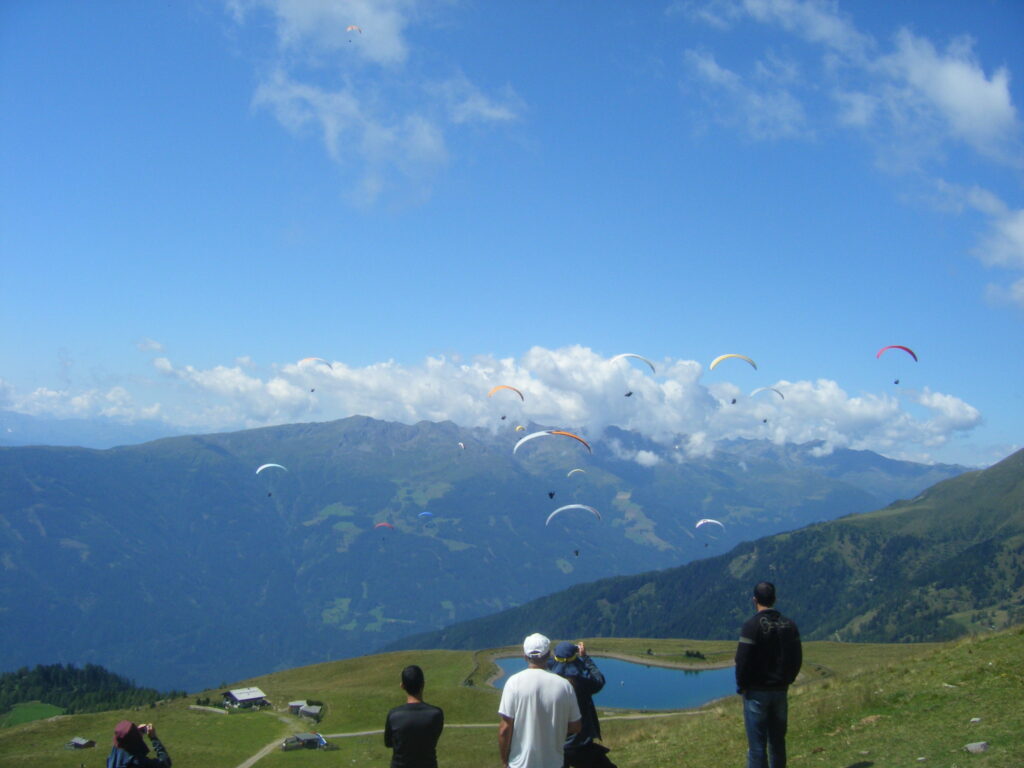The Danger of Towing Lockout
Lockouts occur when a glider gets turned away from the towline direction then reaches a point where the pilot cannot recover. How and why, this happens is explained below.
First, let us list the most common causes of lockout:
l. Turbulence lifting a wing. In this case we will have the situation of position 2 shown in figure 1-6, or position 3 if the glider is also tossed to one side of the tow centerline.
2. Overbanking when performing a correction. If you enter into a roll oscillation, it is possible to veer so far to one side that a lockout begins.
3. Operating in a crosswind, especially when towing from a payout winch. A strong gust from the side can force you off the tow centerline with your heading not lined up with the towline.
4. Not following the tug properly during turns while aerotowing. Allowing your glider to drift to the outside of an aerotow turn is the potential lockout situation of position l.
In general, aerotowing is more forgiving of misalignments than surface towing (although four reported tandem aerotow lockouts indicate that tandem is a special case) because the towline angle with respect to the glider is less with aerotowing and the tow forces are lower. In our experience, control problem begins with as little as 15 0 deviation from the centerline with surface towing while a 45 0 deviation (wings level) can be brought back to center on aerotow
Now let us look at the forces on tow when the glider gets disturbed from the wings level, centered path. We see a glider yawed to the side of the towline. In this case the wings are level but the glider is being pulled in a slip (partially sideways) by the tow force. This slip may lift the forward wing more than the other, since it sees more direct airflow. As a result it may tend to roll away from the tow direction.
The situation is worse if a gust or overcontrol rolls the glider. The resultant (combination of lift and drag) is not aligned with the downward force (gravity and the tow force) so the glider moves to the side. In this case we end up like the third drawing of figure 1-6 where the glider is both rolled and yawed with respect to the horizon and towline. In this latter situation, the pilot will feel an input from the glider resisting his or her attempts to level the glider.
If the pilot isn’t successful at leveling the wings, the turn to the side continues until the glider’s bank steepens and it begins diving or slipping (to the opposite side of the original slip) towards the ground. Here we have depicted the interaction of the tow force and gravity with the aerodynamic forces. In the left drawing, the pilot is beginning a lockout situation
Because the glider is turning away from the towline, the tow force has increased but is still directed along the towline. The force of gravity always remains the same and is directed straight down. These two forces combine to produce the apparent force (AF) that the glider “feels. ” Note how this force is directed to the
side of the plane passing through the glider’s keel and kingpost and is not aligned with the resultant.
This misalignment is what causes the glider to continue to move sideways and worsen the lockout. The right drawing shows the more severe situation as the lockout deepens. Here the AF is stronger and even more misaligned with the resultant.
When the glider begins a lockout, it is slipping earthward. This action causes it to yaw nose down as shown. In free flight, this yawing is desirable for recovery, but under tow it worsens the lockout condition because the tow force doesn’t allow the glider to follow the necessary curving path. Also, the pilot feels increased force combating his or her roll correction input because the AF is pulling him or her off to the side and the turn is not coordinated. In free flight the pilot centers on the bar with proper pitch control, but in a lockout he or she cannot center the apparent force. The result is a continuously worsening situation.
The key to avoiding lockouts on a hang glider is to keep the wings level on tow and follow the towline. If the glider doesn’t respond in a timely fashion to your roll inputs, or if the towline or bridle contact the glider’s front cables, release. Note: The shorter the towline, the faster the above process occurs. The reactions of ultralight sailplanes are similar to that of hang gliders Paraglider lockouts occur in a similar fashion to that described above for hang gliders except the contrary forces are easier to control.
Paraglider lockouts occur in a similar fashion to that described above for hang gliders. In this case, the pilot can prevent a yaw very readily, but when yaw does occur, a roll away from the towline also occurs since the pilot’s body is pulled partially sideways to the canopy. If the yaw isn’t controlled for, the roll worsens as the canopy flies away from the direction of tow. From this point onward, the forces and events follow closely the hang-gliding scenario described above.
Paragliders do not have exceptional yaw stability, so they are susceptible to yawing on tow. To prevent lockouts, monitor the canopy constantly and keep it square to the towline.
This article was written by Dennis Pagen and Bill Bryden

